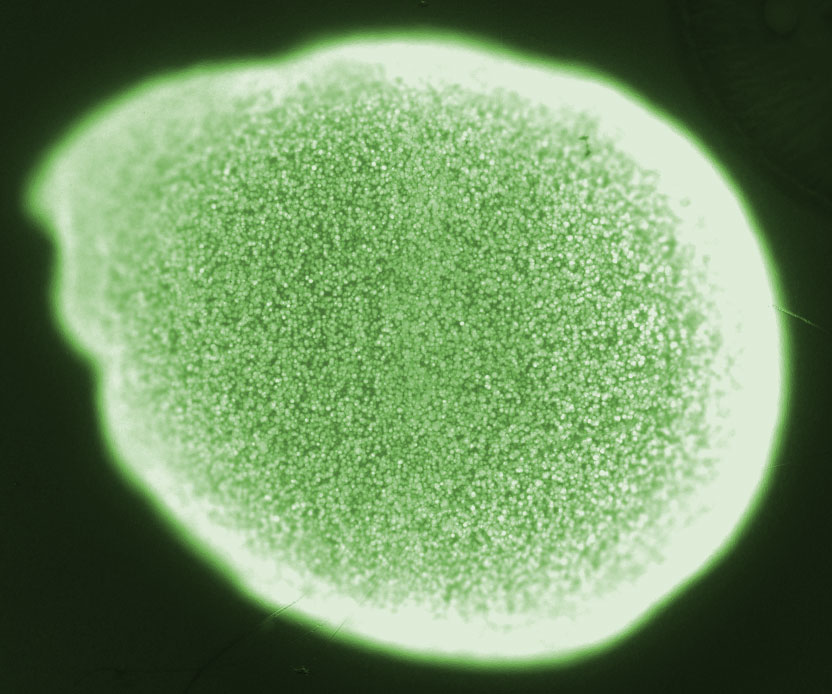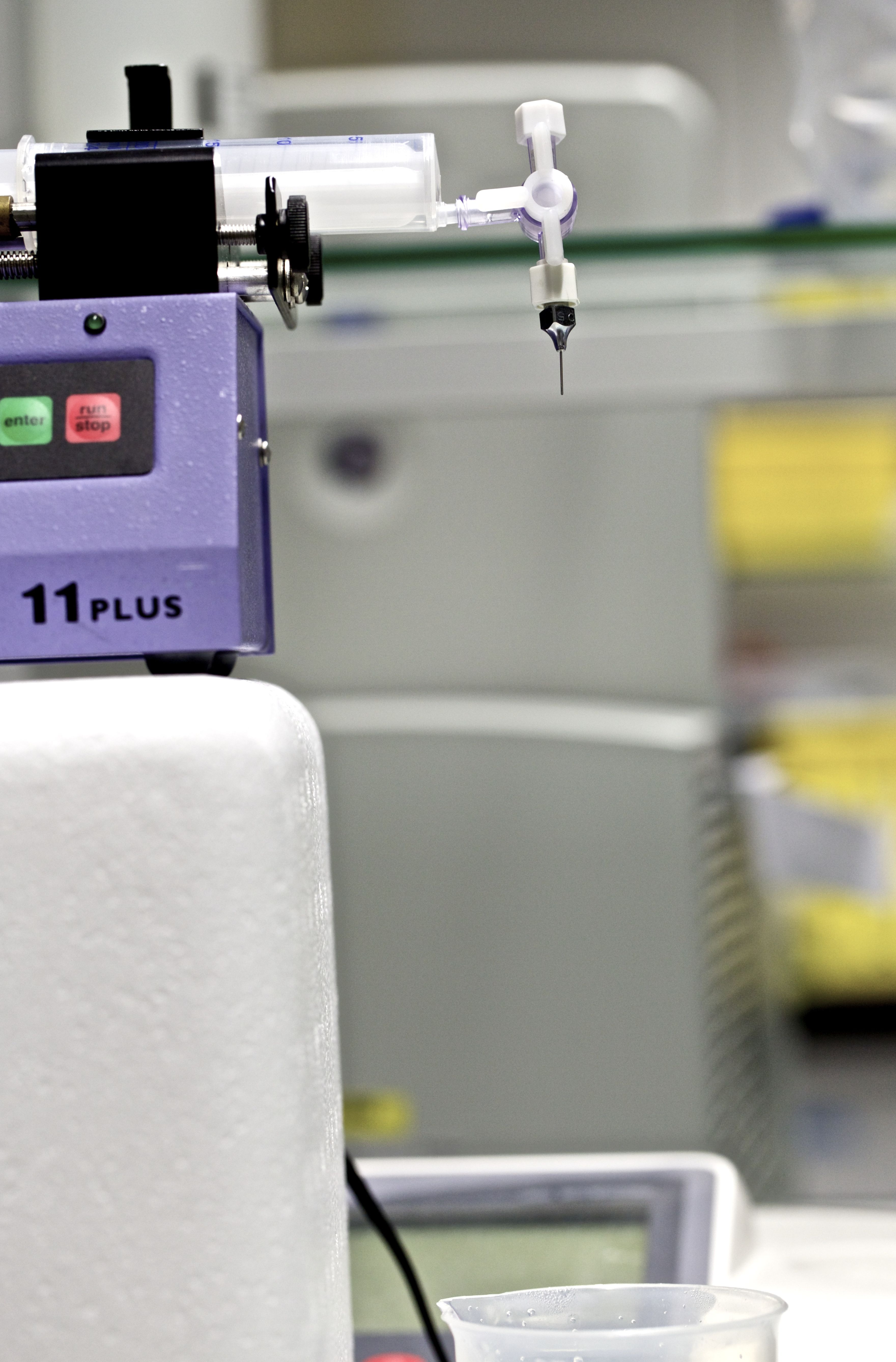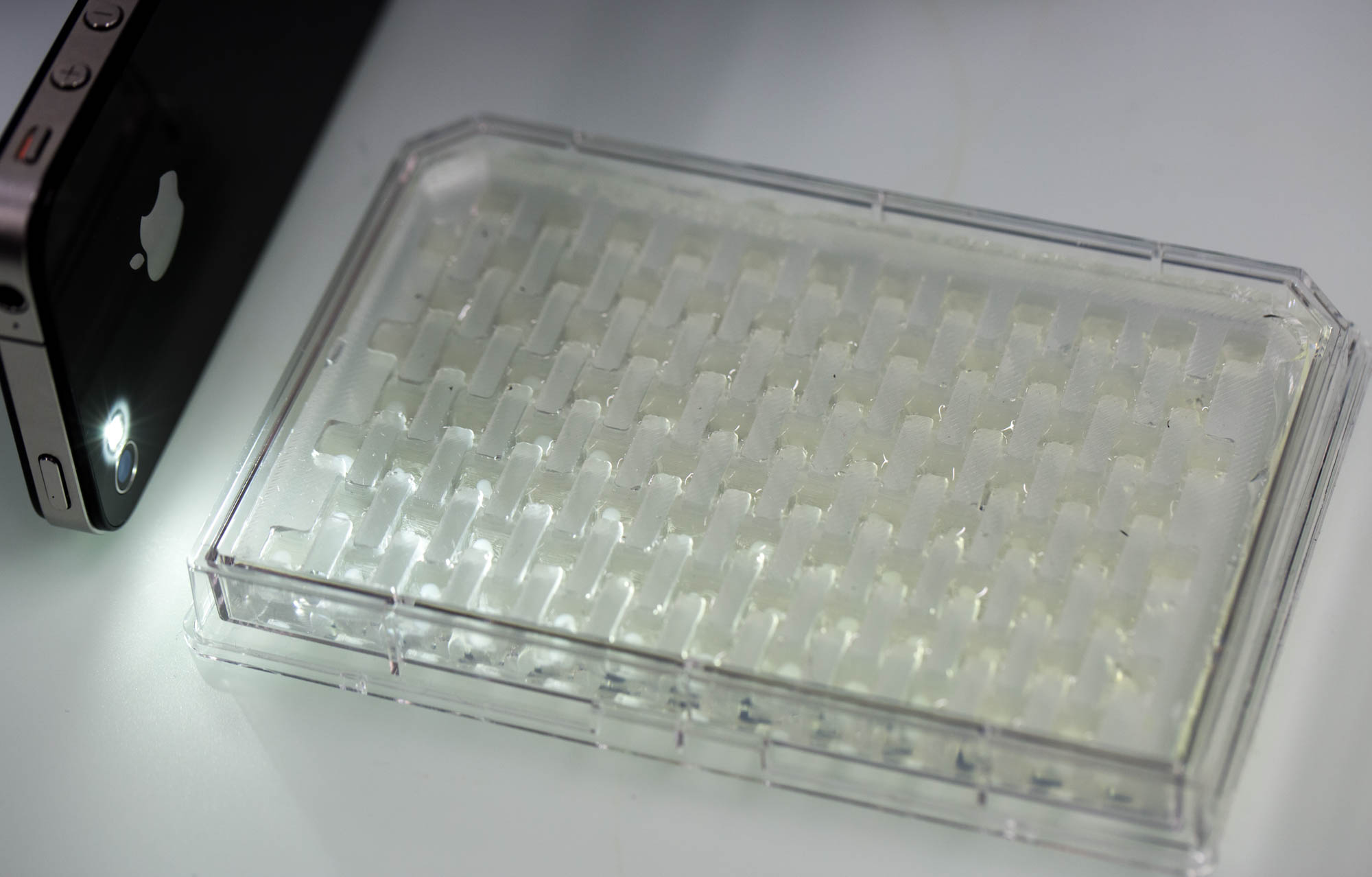Team:ETH Zurich/lab/bead
From 2014.igem.org
(→Overview) |
(→Overview) |
||
| Line 5: | Line 5: | ||
{| | {| | ||
| - | [[File:ETH2014_BeadLogo.jpg|left|300px|thumb| Na<sup>2+</sup> alginate is extruded through a needle device]] | + | [[File:ETH2014_BeadLogo.jpg|left|300px|thumb| '''Figure 1 Na<sup>2+</sup> alginate is extruded through a needle device''']] |
Alginates are present as structural components in both the cell walls of brown algae and the capsules of soil bacteria. However, commercially available alginate is mainly extracted from algae. The polysaccharides find a broad application in various fields: in textile printing, in food industry or in research. The chemical features of alginates allow immobilization of macromolecules and cells, thus, the compound is commonly used in biotechnology, biomedicine and pharmacy<sup>[[Team:ETH_Zurich/project/references#refEmergence|[24]]]</sup>. In our project we encapsulated bacteria in alginate beads so as to ensure local separation of the different units (here strains) and directional communication between them. These prerequisites are required for controlled pattern formation. | Alginates are present as structural components in both the cell walls of brown algae and the capsules of soil bacteria. However, commercially available alginate is mainly extracted from algae. The polysaccharides find a broad application in various fields: in textile printing, in food industry or in research. The chemical features of alginates allow immobilization of macromolecules and cells, thus, the compound is commonly used in biotechnology, biomedicine and pharmacy<sup>[[Team:ETH_Zurich/project/references#refEmergence|[24]]]</sup>. In our project we encapsulated bacteria in alginate beads so as to ensure local separation of the different units (here strains) and directional communication between them. These prerequisites are required for controlled pattern formation. | ||
|} | |} | ||
Revision as of 23:25, 17 October 2014
Beads
Overview
Properties
Production
Loading the Chip
 "
"

















